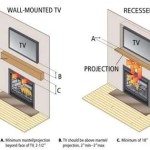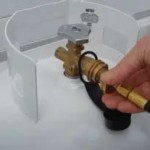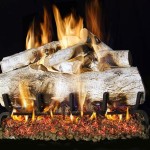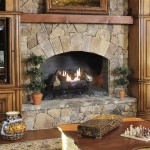Floating Wood Fireplace Mantel Shelf Ideas
The fireplace, a traditional focal point in many homes, provides warmth, ambiance, and a place for decorative expression. The mantel, traditionally a structural element to support the chimney breast, has evolved into a primarily decorative feature. The floating wood fireplace mantel shelf, in particular, offers a contemporary and minimalist aesthetic that complements modern, rustic, and transitional interior design styles. This article explores various floating wood fireplace mantel shelf ideas, considering design elements, wood types, installation methods, and safety considerations to help homeowners and designers make informed decisions.
A floating mantel differentiates itself from traditional mantels through its concealed support system, creating the illusion that it is suspended in mid-air. This clean, uncluttered look provides a sophisticated touch to any fireplace surround. The choice of wood, finish, and dimensions are crucial factors in achieving the desired aesthetic and ensuring compatibility with the overall design scheme of the room.
Key Considerations Before Choosing a Floating Mantel
Before selecting and installing a floating wood fireplace mantel shelf, several factors warrant careful consideration. These include the fireplace type (gas, electric, or wood-burning), local building codes, combustible clearances, the desired style, and the structural integrity of the wall to which the mantel will be attached.
Firstly, the type of fireplace significantly impacts the allowable materials and installation distances. Gas and electric fireplaces generally have lower combustible clearances compared to wood-burning fireplaces. Combustible clearances are the minimum distances required between combustible materials, such as wood, and the firebox or flue of the fireplace. These clearances are mandated by building codes to prevent fires. It is imperative to consult local building codes and the fireplace manufacturer's specifications to determine the precise combustible clearances for the specific fireplace model. Disregarding these clearances can lead to hazardous situations. In some cases, non-combustible materials may be needed to reduce the distance to combustible surfaces.
Secondly, the style of the mantel should complement the overall design aesthetic of the room. Sleek, modern interiors often benefit from minimalist mantels with clean lines and simple finishes. Rustic interiors might call for mantels made from reclaimed wood with a distressed finish, showcasing natural imperfections and character. Transitional styles that blend modern and traditional elements can incorporate mantels with a balanced design, featuring clean lines with subtle details.
Thirdly, the structural integrity of the wall is paramount. Floating mantels, especially those made from solid wood, can be quite heavy. The wall must be capable of supporting the weight of the mantel and any items placed on it. This typically involves attaching the mantel to wall studs or using specialized mounting hardware designed for heavy loads. For walls constructed from materials like brick or concrete, appropriate anchors and drilling techniques are necessary to ensure a secure and stable installation. If there is any doubt about the wall’s structural capacity, consulting a qualified structural engineer is highly recommended.
Exploring Wood Types and Finishes
The choice of wood for a floating fireplace mantel shelf is a significant design decision, affecting both the aesthetic appeal and the durability of the mantel. Various wood species offer distinct characteristics in terms of grain pattern, color, hardness, and workability. The finish applied to the wood further enhances its appearance and protects it from moisture, scratches, and UV damage.
Hardwoods like oak, maple, cherry, and walnut are popular choices for mantels due to their durability, rich grain patterns, and inherent beauty. Oak is known for its strength and prominent grain, making it suitable for both rustic and traditional styles. Maple offers a smoother, more uniform grain and a lighter color, lending itself well to modern and contemporary designs. Cherry exhibits a warm reddish-brown hue and a fine grain, providing an elegant and sophisticated look. Walnut is prized for its dark, rich color and distinctive grain patterns, adding a touch of luxury to any fireplace surround.
Softwoods like pine, cedar, and fir are also used for mantels, often in more rustic or informal settings. Pine is readily available and relatively inexpensive; however, it is softer than hardwoods and more prone to dents and scratches. Cedar is naturally resistant to decay and insects, making it a good choice for mantels exposed to moisture. Fir offers a straight grain and a light color, often used in painted or stained mantels.
The finish applied to the wood can significantly alter its appearance and protective qualities. Common finishes include stains, paints, varnishes, lacquers, and oils. Stains enhance the natural grain of the wood and add color, while paints provide a solid, opaque finish. Varnishes and lacquers offer a durable, protective coating that resists scratches and moisture. Oils penetrate the wood, providing a natural look and feel while offering some protection. The choice of finish depends on the desired aesthetic and the level of protection required.
Reclaimed wood, sourced from old barns, factories, or other structures, offers a unique and sustainable option for fireplace mantels. Reclaimed wood often features a weathered appearance, nail holes, and other imperfections that add character and history to the mantel. It is crucial to ensure that reclaimed wood is properly treated to prevent insect infestation and to remove any potential hazards before using it in a fireplace surround.
Installation Techniques and Support Systems
The successful installation of a floating wood fireplace mantel shelf hinges on a robust support system capable of bearing the weight of the mantel and any decorative items placed on it. Several installation techniques and support systems are available, each with its own advantages and disadvantages, depending on the mantel size, weight, and wall construction.
One common method involves using heavy-duty metal brackets that are concealed within the mantel. These brackets typically consist of steel rods or plates that are welded together to form a strong, rigid support. The brackets are securely attached to the wall studs using lag bolts or screws, and the mantel is then slid over the brackets, concealing them completely. This method provides a clean, minimalist look, as the support system is invisible.
Another approach involves creating a hollow core within the mantel and inserting a steel tube or pipe that spans the width of the mantel. The ends of the tube are then anchored to the wall studs using flanges or mounting plates. This method is particularly effective for long mantels, as it provides continuous support along the entire length. The hollow core also reduces the overall weight of the mantel, making it easier to handle and install.
For walls constructed from brick or concrete, specialized anchors are required to ensure a secure and stable installation. These anchors typically consist of expanding sleeves or epoxy-based adhesives that grip the masonry material. It is crucial to use anchors that are specifically designed for the type of masonry being used and to follow the manufacturer's instructions carefully. Drilling into brick or concrete requires specialized tools and techniques to avoid damaging the wall.
Regardless of the chosen installation method, it is imperative to ensure that the mantel is level and plumb. Using a level and shims can help to achieve a perfectly horizontal and vertical alignment. It is also crucial to check the weight capacity of the support system to ensure that it can safely support the mantel and any items placed on it.
In addition to the physical support system, adhesive can reduce movement of the mantel and improve longevity. High strength construction adhesive will help to keep the wood secured to the brackets you will be using.
The floating wood fireplace mantel should be installed by a professional with knowledge of building methods and local building codes. This will guarantee the longevity and more importantly, the safety of the mantel.

Rustic Wood Fireplace Mantel Shelf Distressed Farmhouse Handmade Floating Beam Custom Grain Free

Large Wood Beam Mantle Shelf 78 84 Floating Fireplace Mantel

Brilliant Built In Shelves Ideas For Living Room 1 Farm House Farmhouse Decor Remodel

Fireplace Mantle Mantel Beam Floating Shelf Rustic Wooden Wood Shelving Farmhouse Decor Modern

Diy Living Room Neutral Decor Floating Shelves Shiplap Floatingshelves With Fireplace

ᑕ❶ᑐ Level Up Your Diy Skills With A Floating Fireplace Mantel Magikflame

Why You Need A Floating Mantel In Your Home

Fireplace Mantel Wood Floating Modern Farmhouse Custom Made Shelf

Barton 60 In X 8 5 H Floating Vintage Wood Fireplace Mantel Wall Cap Shelf Beam Easy Mount White 95157 The Home Depot

7 Contemporary Fireplace Mantel Design Ideas For Interior Designers
Related Posts








